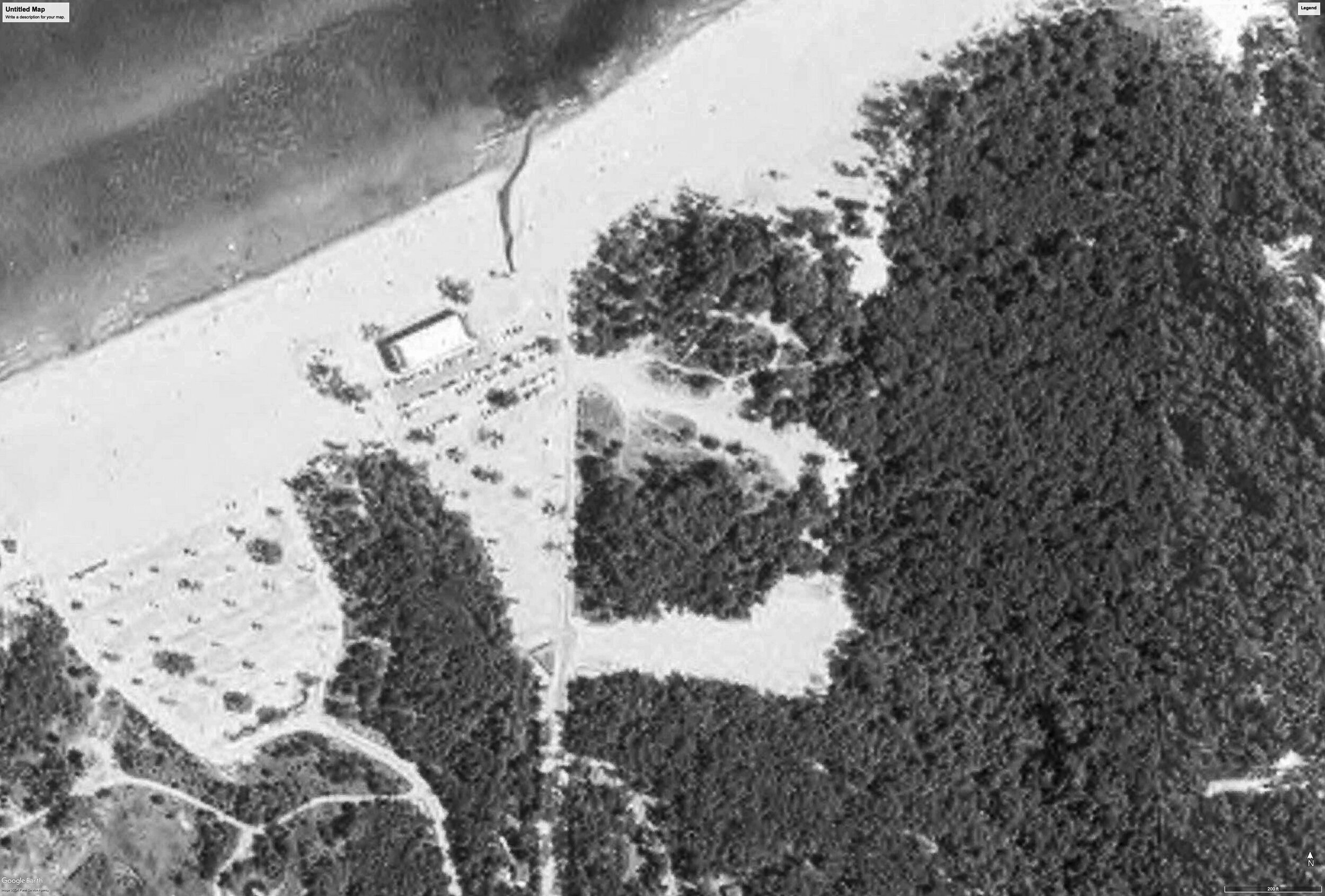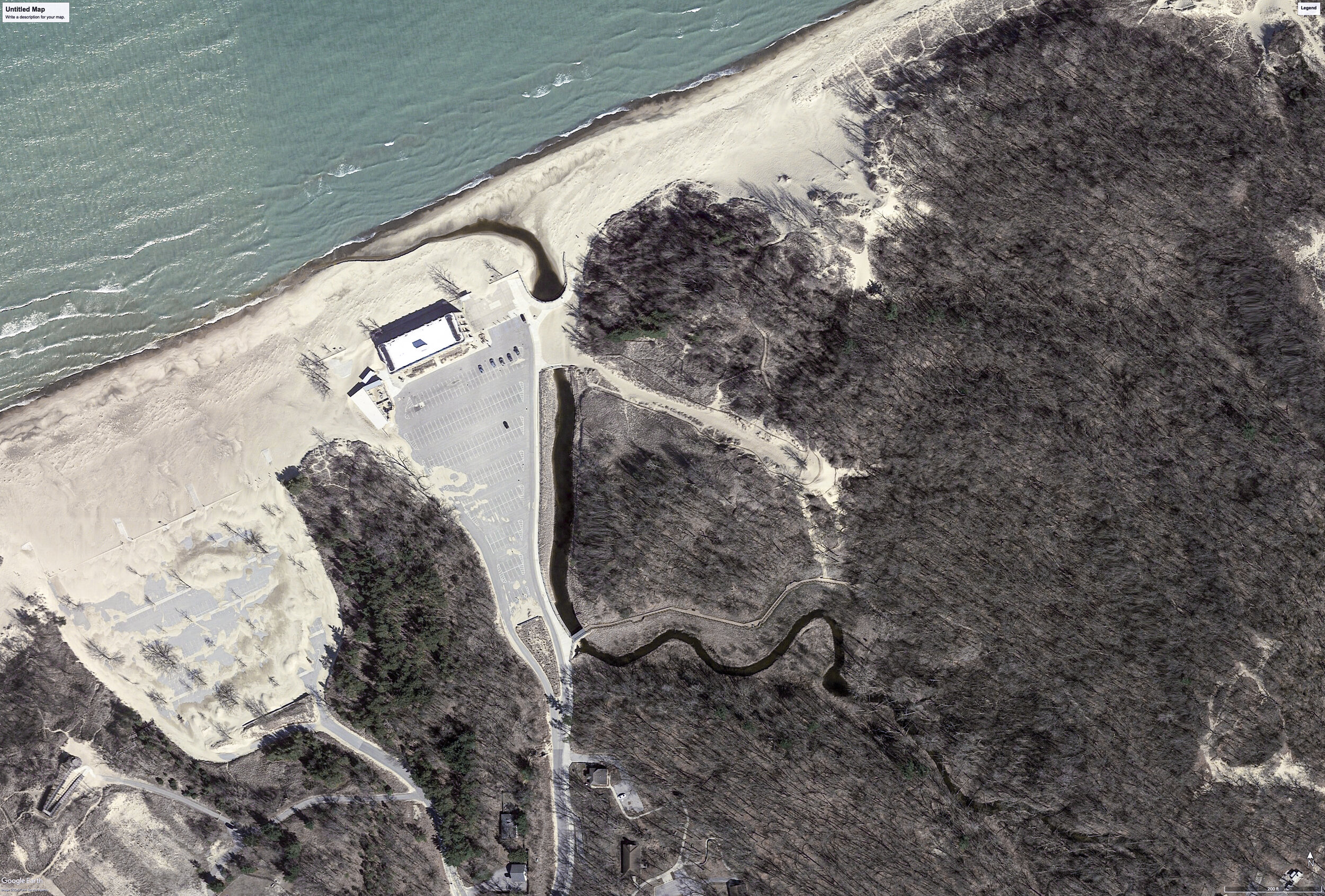Dunes Creek
Location: Westchester, IN
Length: 1,525 feet
Cost: $2.0M
Year: 2010
E. coli traced to the culvert containing Dunes Creek resulted in its daylighting. Sunlight, vegetation, and micro-organisms reduced bacteria levels. Less frequent beach closures and improved usability of the park increased revenues.
Dunes Creek was forced into a culvert under a parking lot at Indiana Dunes State Park in the 1930s. Escherichia coli in Lake Michigan was traced to the creek [01]. The culvert served as an incubator for the bacteria. Beaches regularly closed.
In 2005, an 825-foot section was uncovered in its original channel, replacing a portion of the parking lot. Three years later, a second phase was necessary after a flood collapsed the remaining parking lot. Another 700-foot section was created—running along the reconstructed parking lot [02].
Sunlight immediately reduced Escherichia coli levels. As the ecosystem flourished, vegetation, micro-organisms, and sedimentation further reduced bacteria levels. Fewer beach closings (if any) are anticipated [03]. Terry Heatlie, of the National Oceanic and Atmospheric Administration, explains:
“Beaches were closed because of E. coli, and the enclosure was described as an incubator or Petri dish, so opening it up helped resolve that issue. The natural filtering you get out of the stream can take place now. Flood waters will not be restrained to an 84-inch culvert anymore.”
The creek replaced 150 parking spaces. State officials were concerned this would result in lost revenue. In reality, fewer beach closures increased revenues, and the project enhanced the aesthetic and usability of the park. In 2005, the park brought in 68 cents for every dollar invested. By 2009, that soared to $1.20 [02].
Additionally, the creek provided flood protection, improved fish migration, and increase wildlife habitat. A boardwalk, along the creek, enhanced recreation opportunities. Construction provided local jobs.
The “Dunes Creek Recovery Cam” gave a 15-minute time-lapse of the progress. The public watched as the culvert was excavated, the creek restored, and vegetation planted. The camera alleviated public concerns and questions [01].
The project received numerous awards, including the Izaak Walton League Water Quality Award, Governor’s Award for Environmental Excellence, and Association of Conservation Engineers Award [04].
Sources
Brzozowski, Daylighting Streams (2010).
Healing Our Waters - Great Lakes Coalition, Liberated creek improves park reduces water pollution (2018).
Hohman, Daylighting in the Dunes (2007).
Keagle, State officials dedicate Dunes Creek daylighting project (2015).






